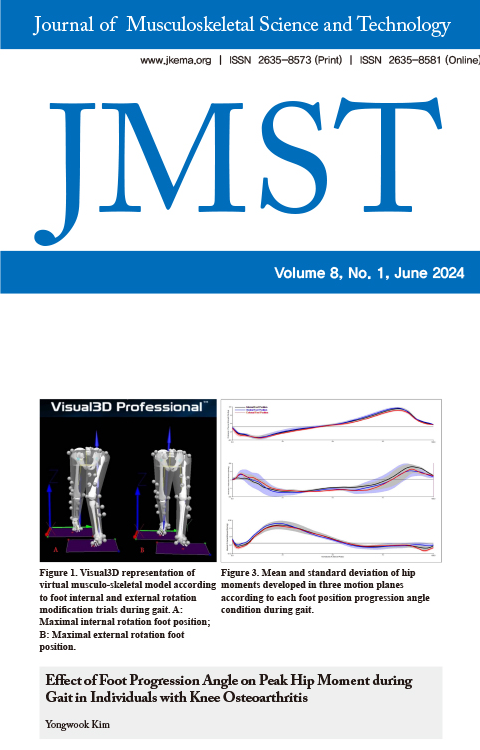Movement Characteristics during Functional Movement according to Knee Varus Type
- KEMA학회
- Journal of Musculoskeletal Science and Technology
- 제8권 제1호
-
2024.069 - 13 (5 pages)
-
DOI : 10.29273/jmst.2024.8.1.9
- 5

Background Knee varus is a typical alignment seen in patients with degenerative arthritis. It can be classified into 2 types of knee varus alignment (Type 1: hip internal rotation, knee hyper-extension, tibia internal rotation, Type 2: hip external rotation, slightly knee flexion, tibia external rotation). Type 1 and 2 have similar knee varus alignment, but the mechanism by which varus alignment is formed is different. This difference in alignment formation results in different movement characteristics when performing various functional movements. However, there is no study comparing the characteristics of movement patterns according to the knee varus alignment type. Purpose The purpose of this study was to investigate the characteristics of lower extremity movements during functional activities according to knee varus types. Study design A comparative study Methods Thirty subjects with knee varus alignment (Type 1: 15 subjects, Type2: 15 subjects) were recruited. Subjects performed the 4 functional movements (gait, one leg standing, stair up & down test). During functional movement tests, lower extremities kinematics (vertical/horizontal displacement) were video-recorded and analyzed using kinovea software. Independent t-test was used to compare the characteristics among different knee varus type. Results There were significant differences in lower extremity kinematics between the two types. Knee varus thrust (horizontal displacement), hip lateral sway (horizontal displacement), and movement were significantly increased in type 1 in gait, one-leg standing, and stair up tests (p< 0.05). Conclusions It was possible to confirm the difference in movement characteristics between the two types during functional activities. Compared to type 2, when evaluating subjects with type 1, it is important to identify problems through tests that cause abnormal horizontal displacement. In addition, it explains the importance of establishing a therapeutic strategy that can minimize the occurrence of such movements during therapeutic intervention.
INTRODUCTION
METHODS
RESULTS
DISCUSSION
CONCLUSIONS
REFERENCES
(0)
(0)